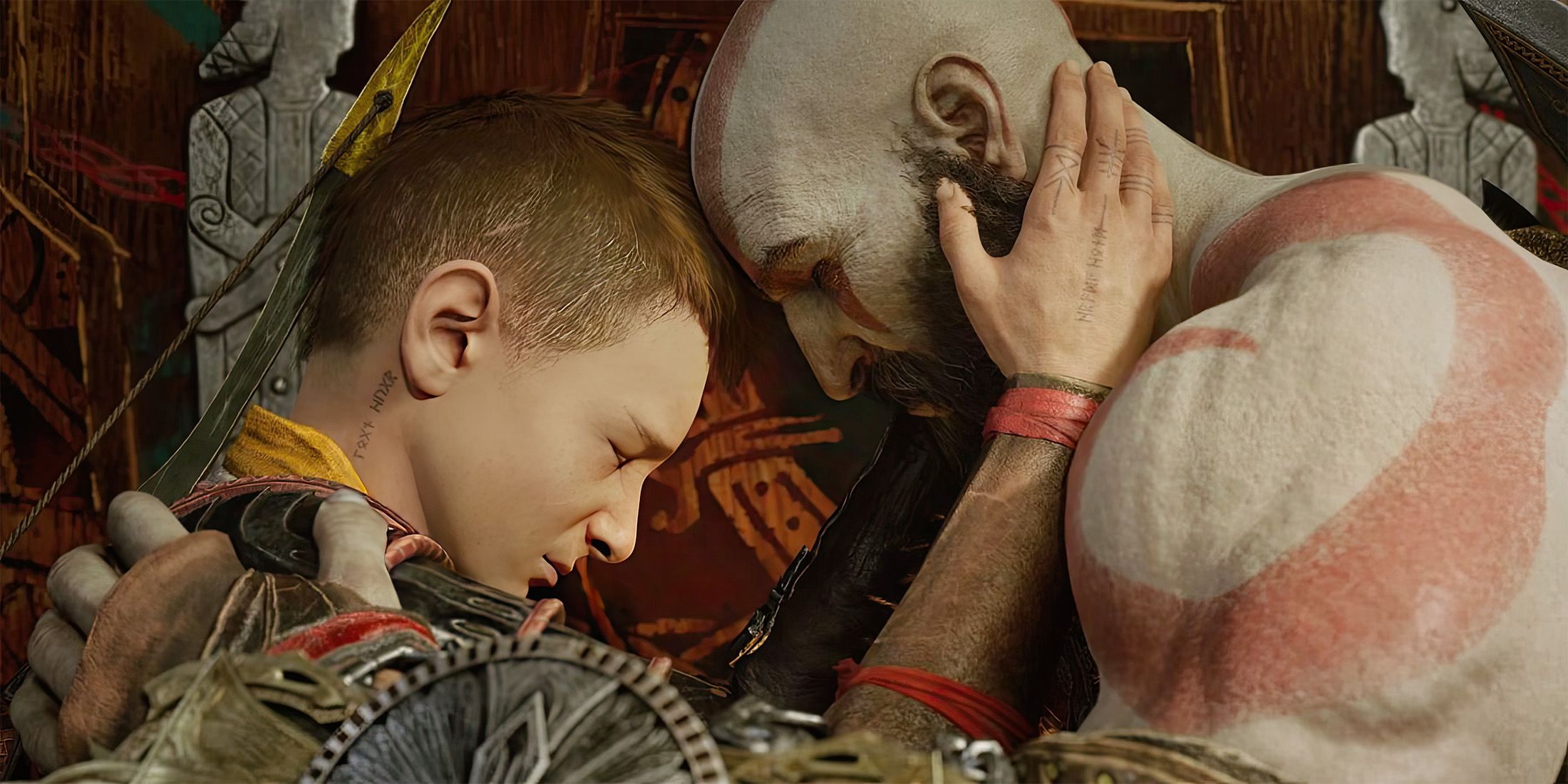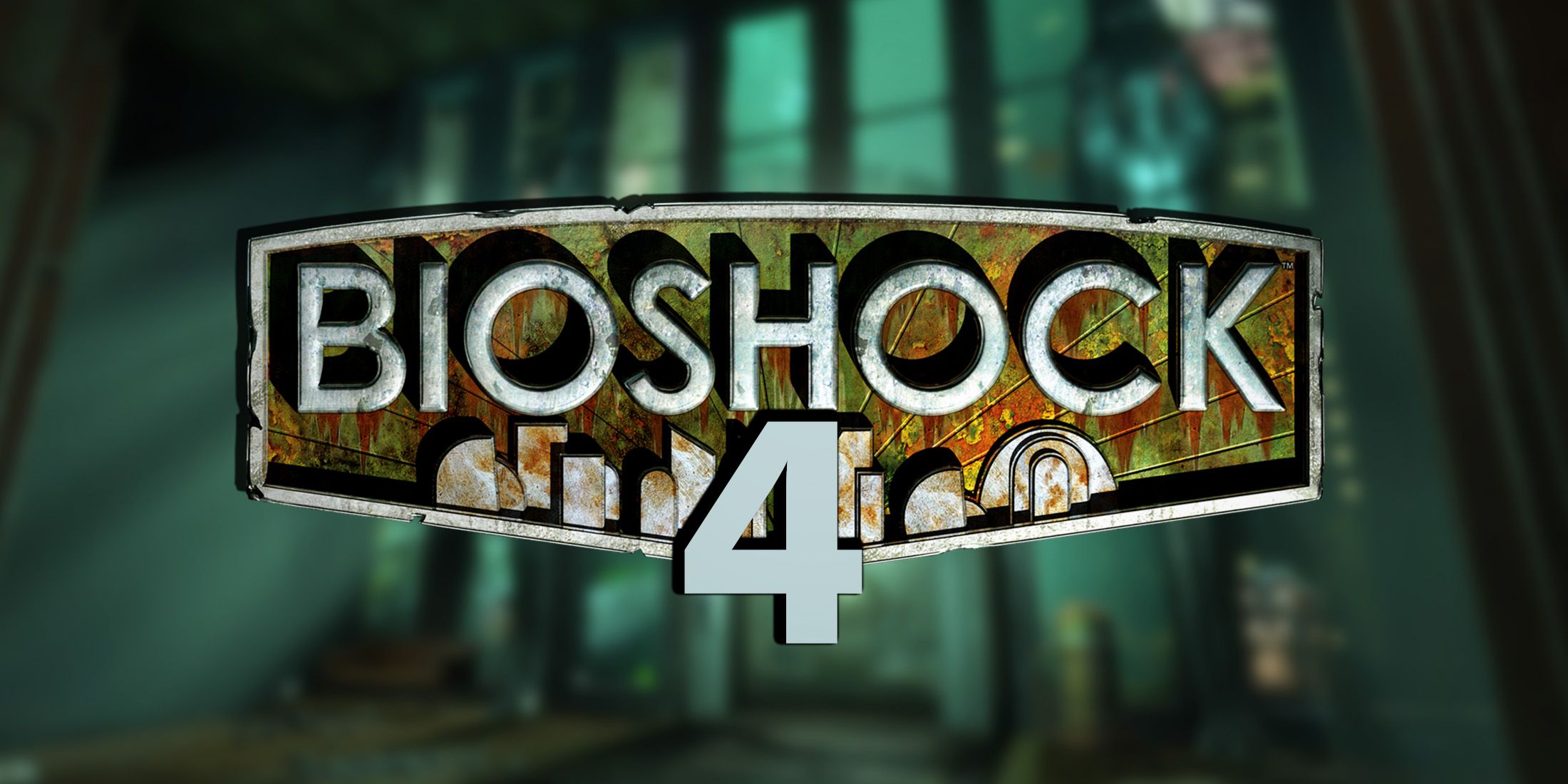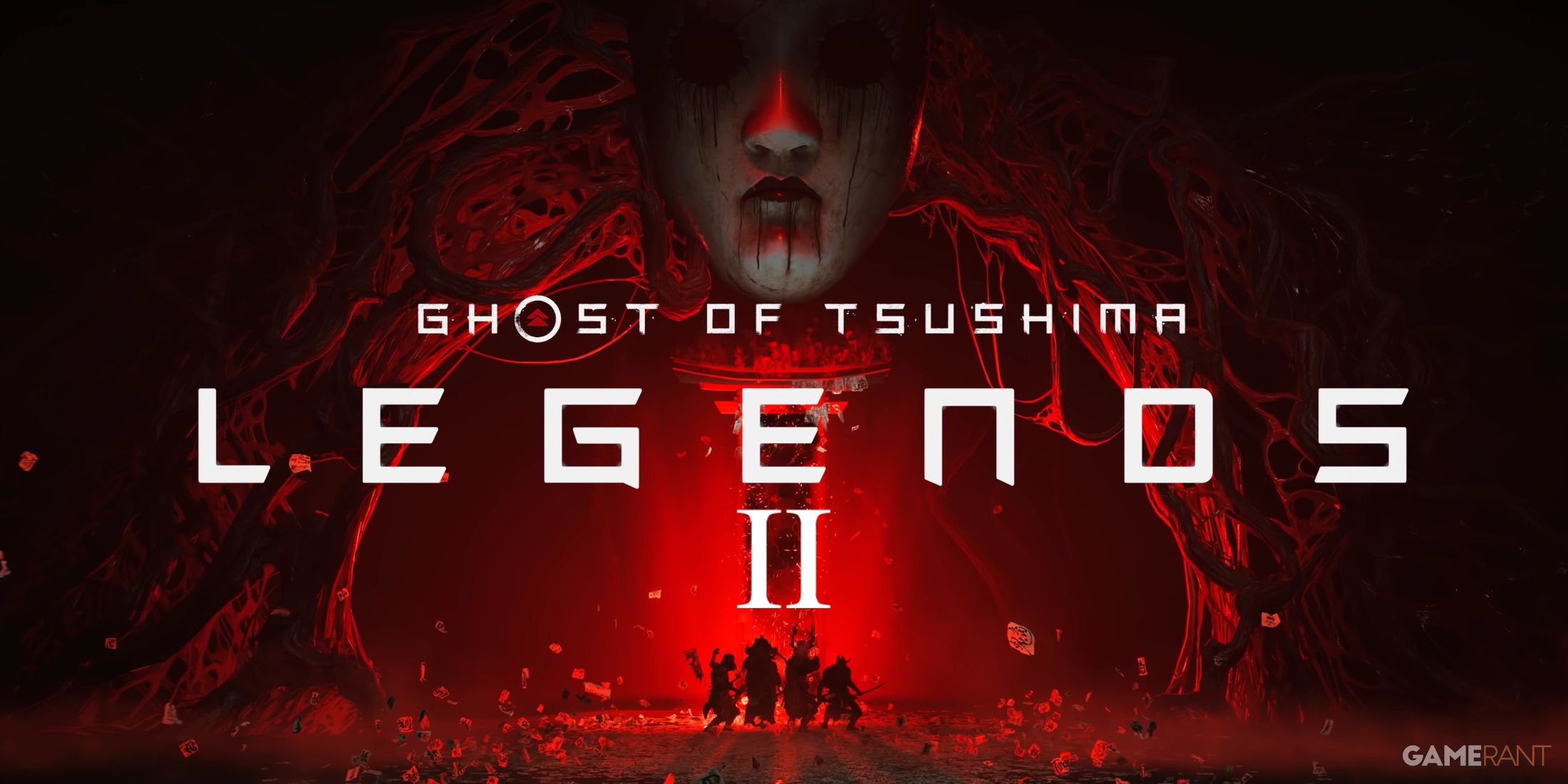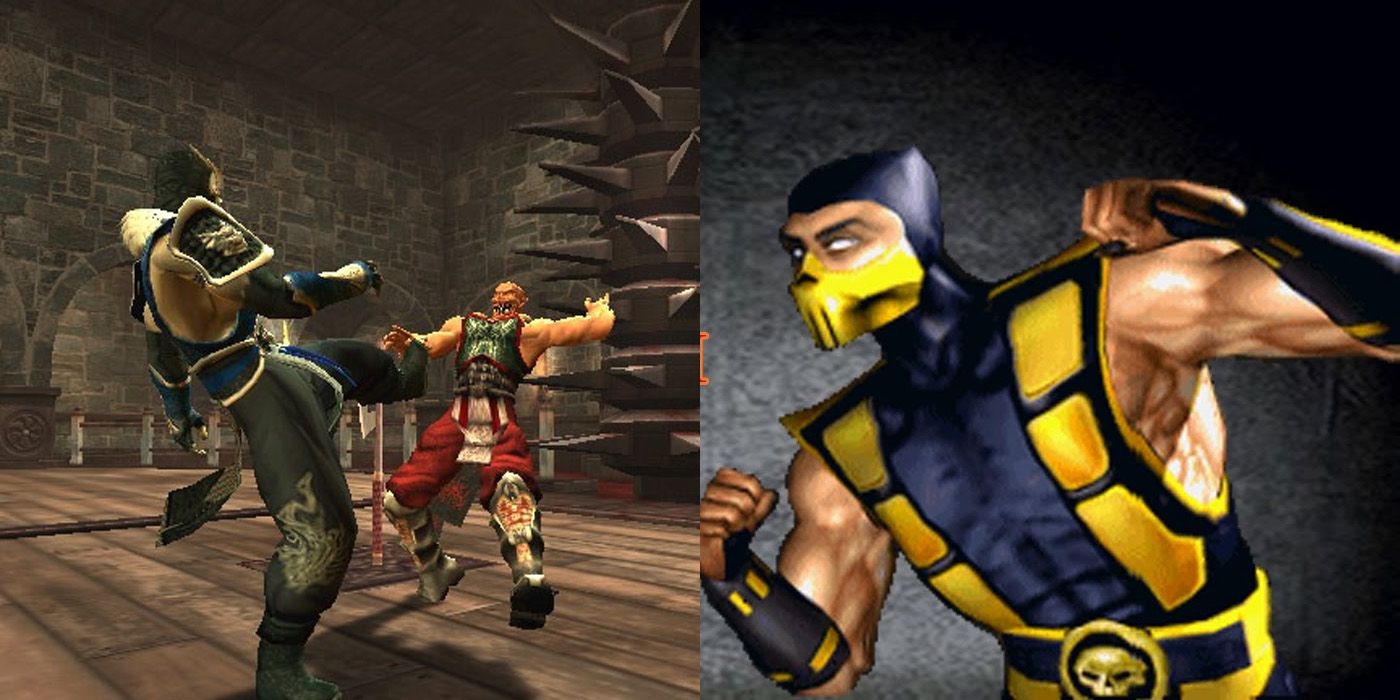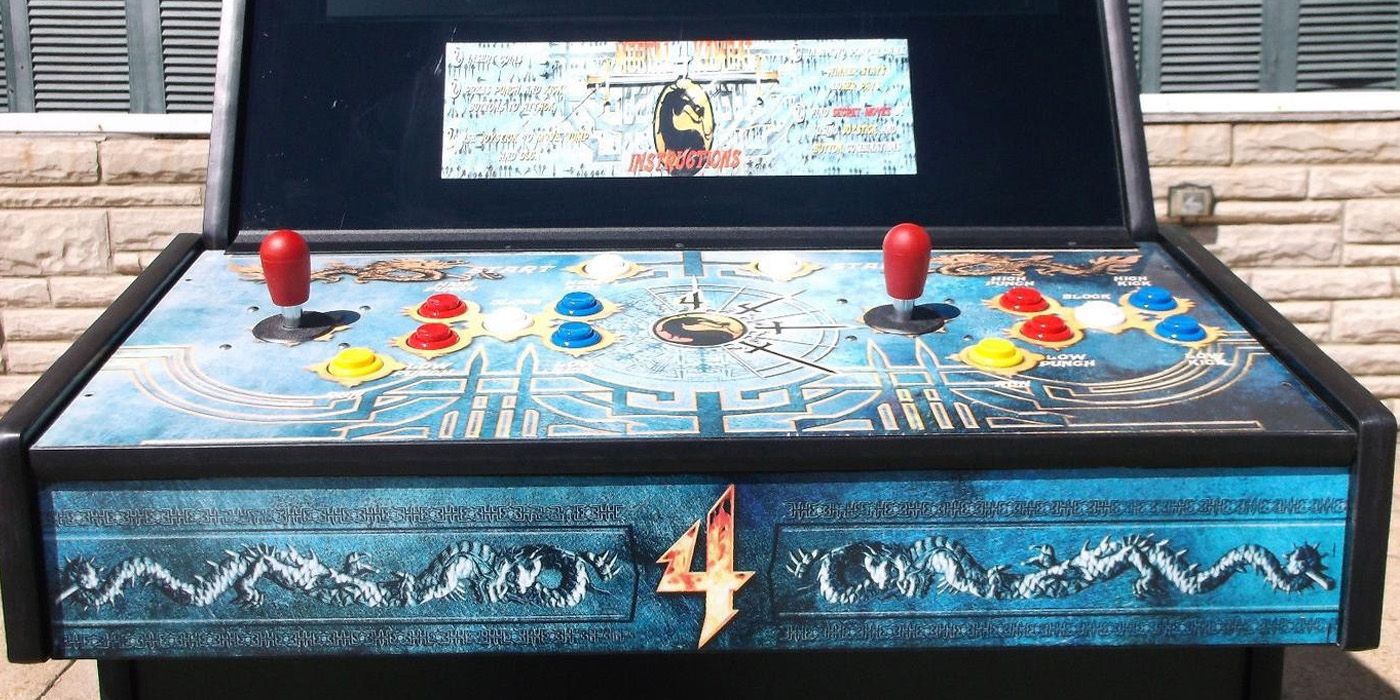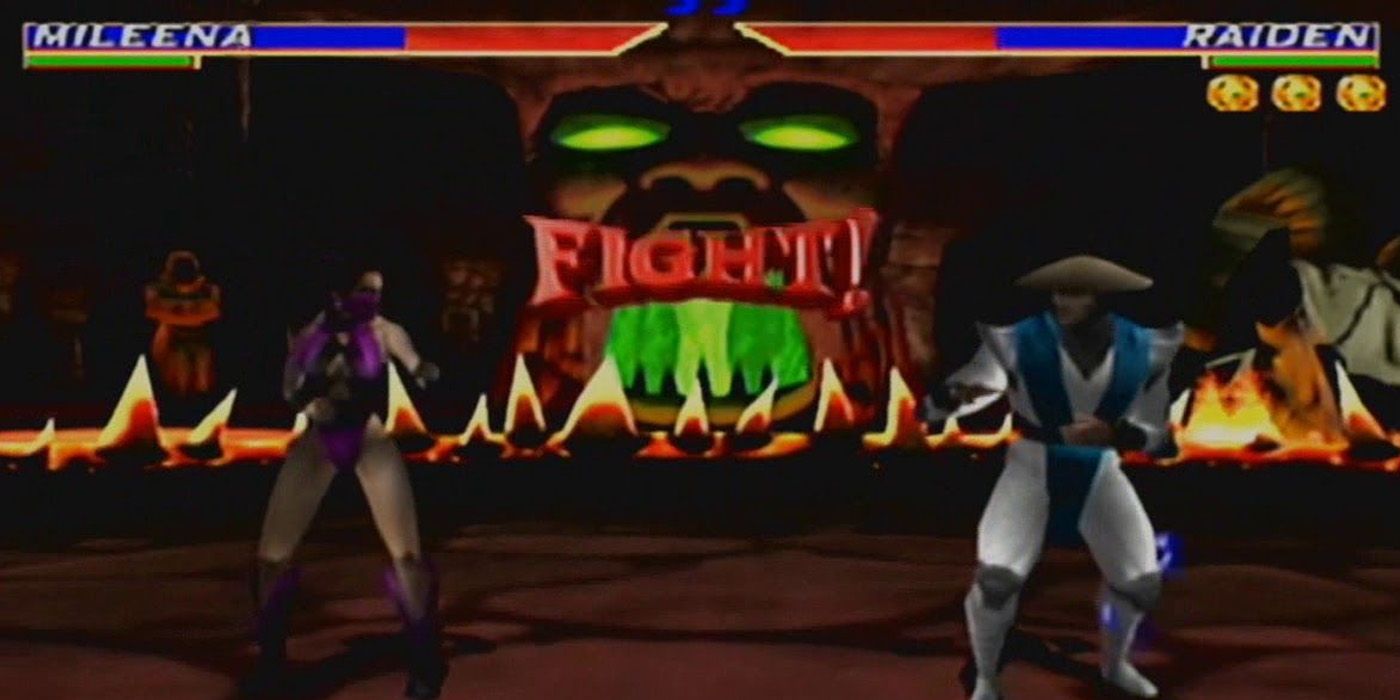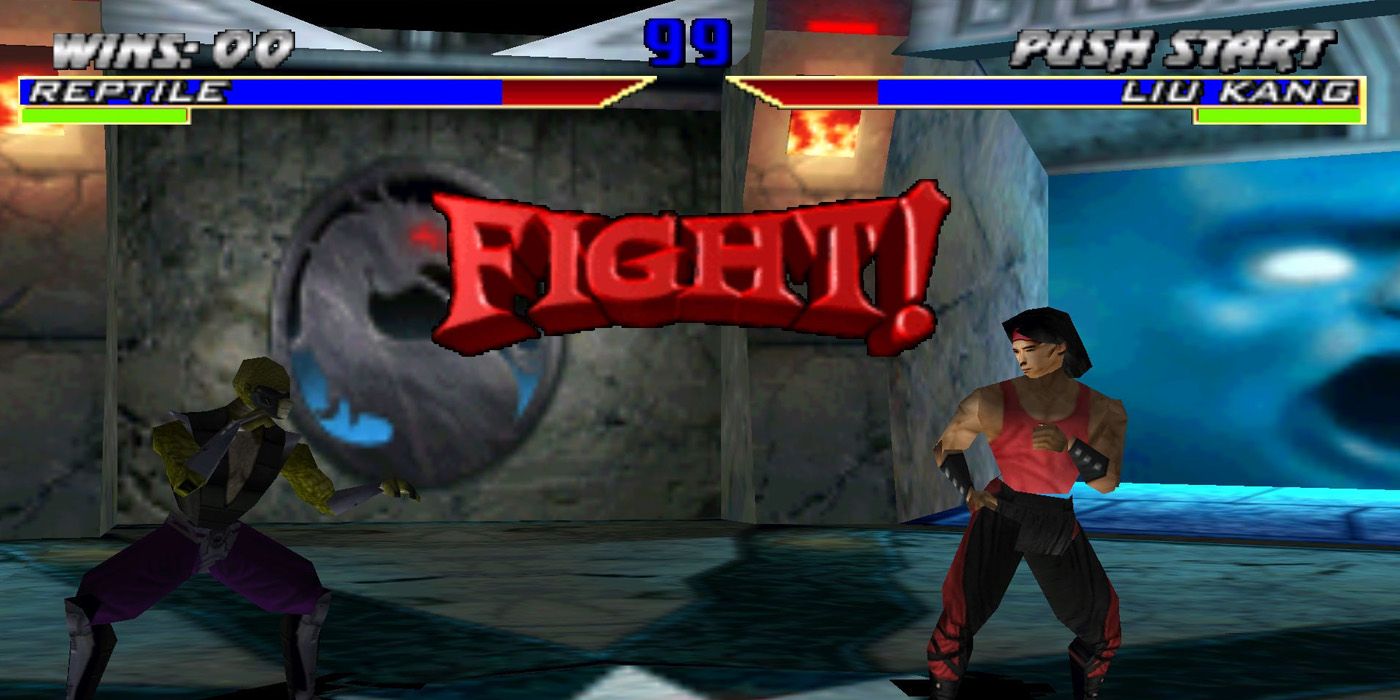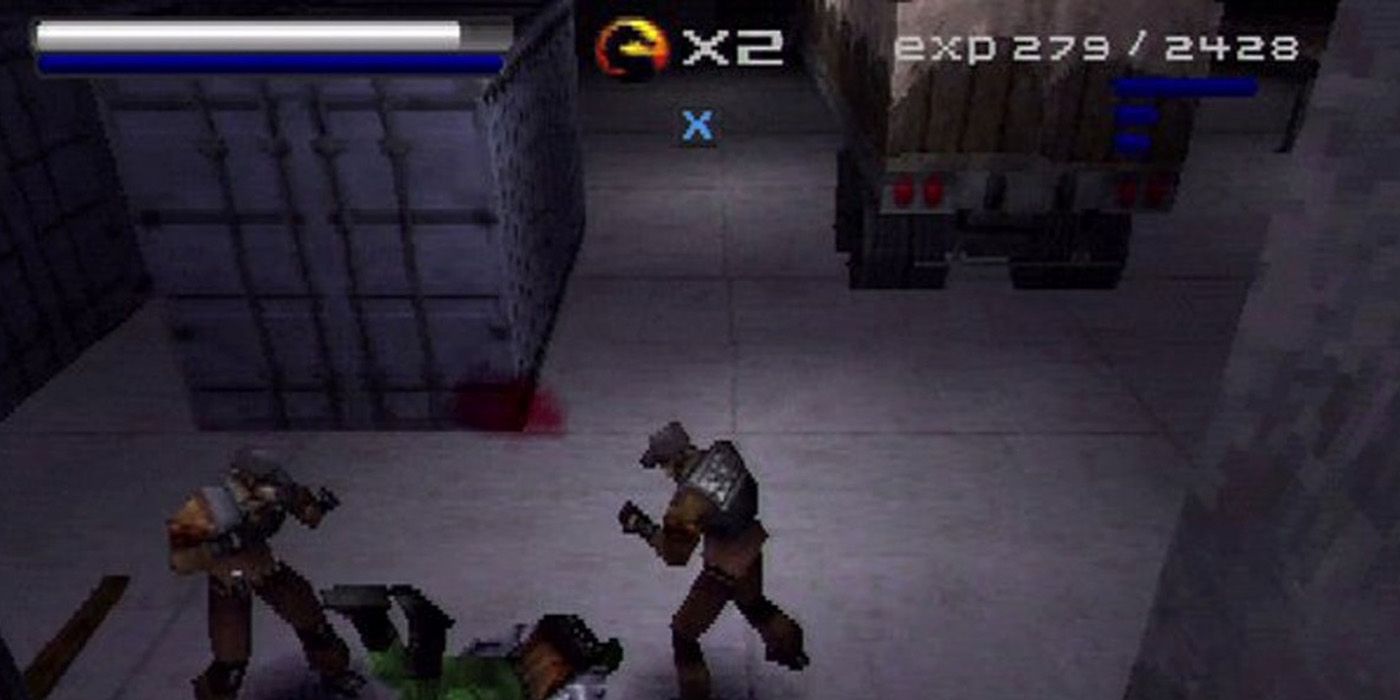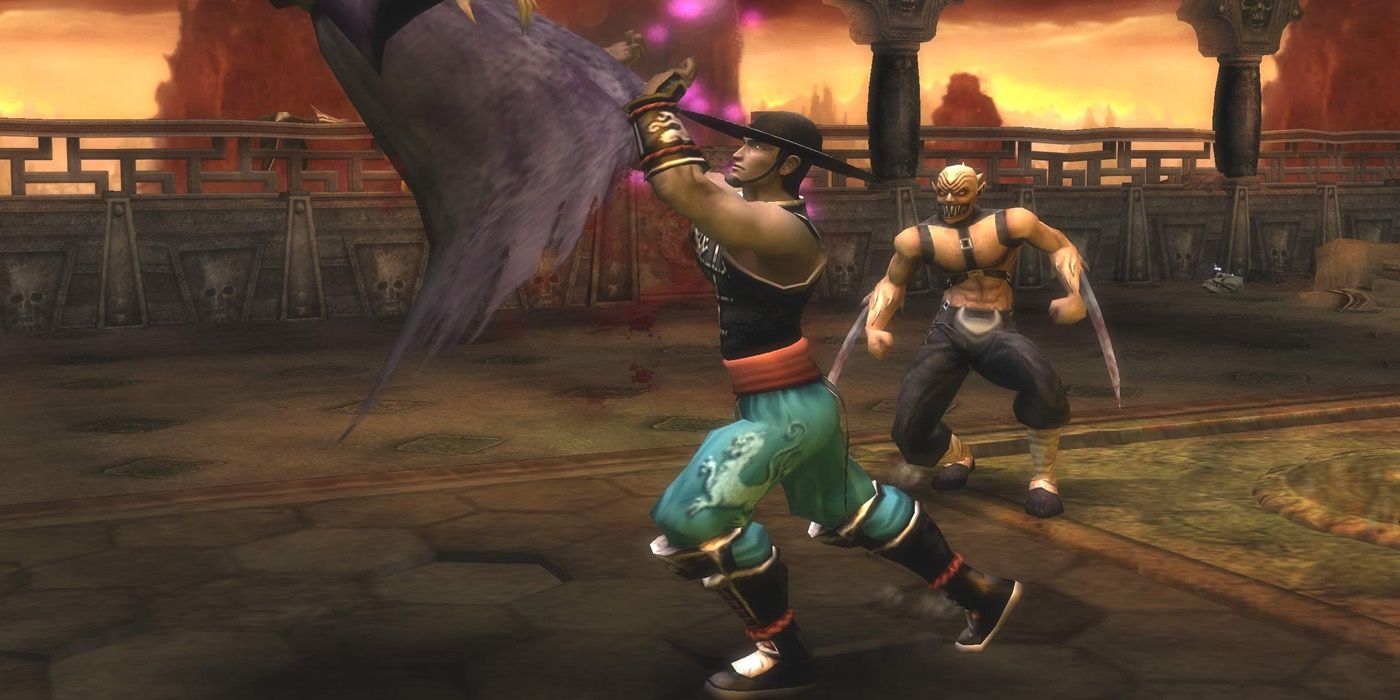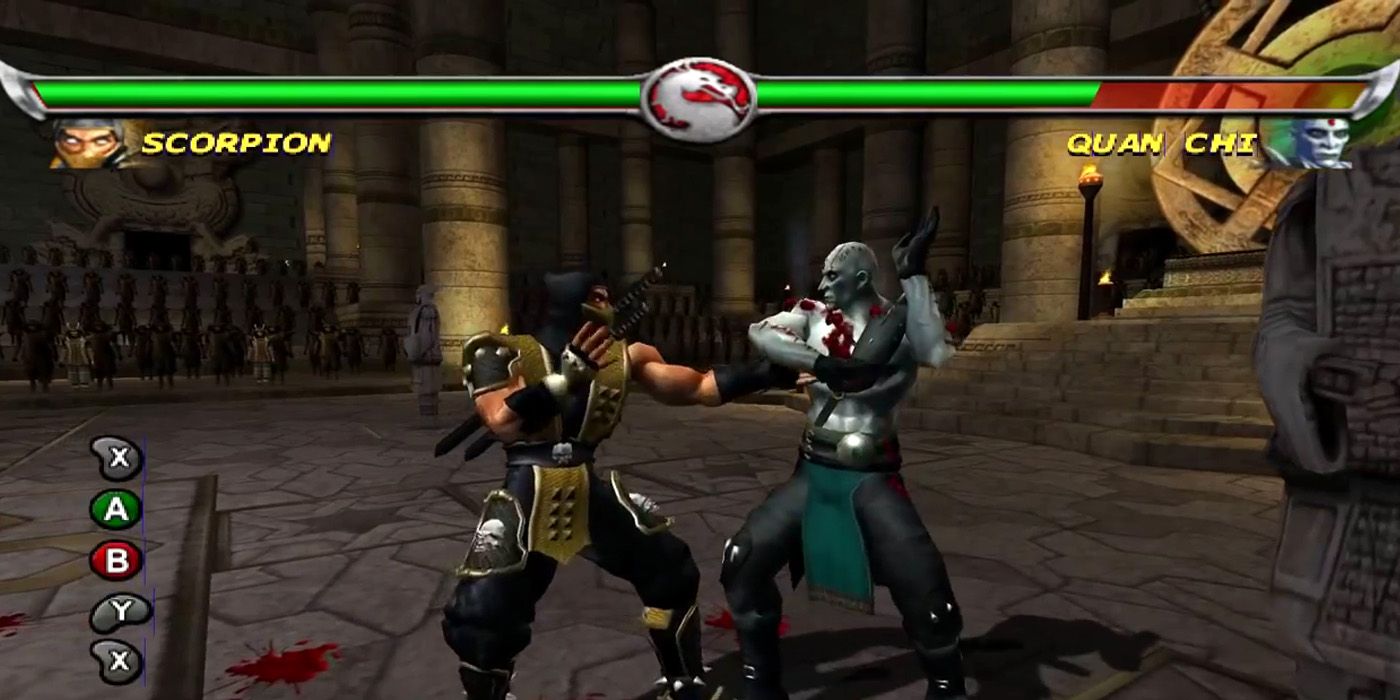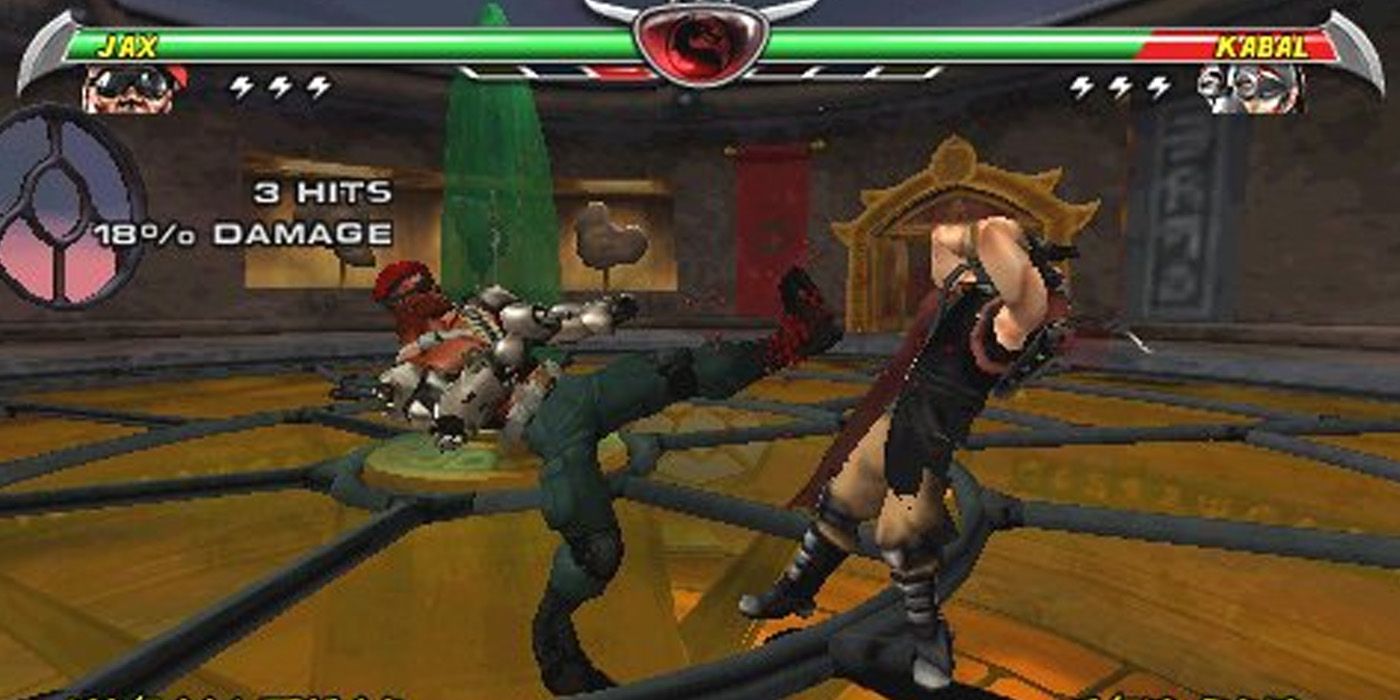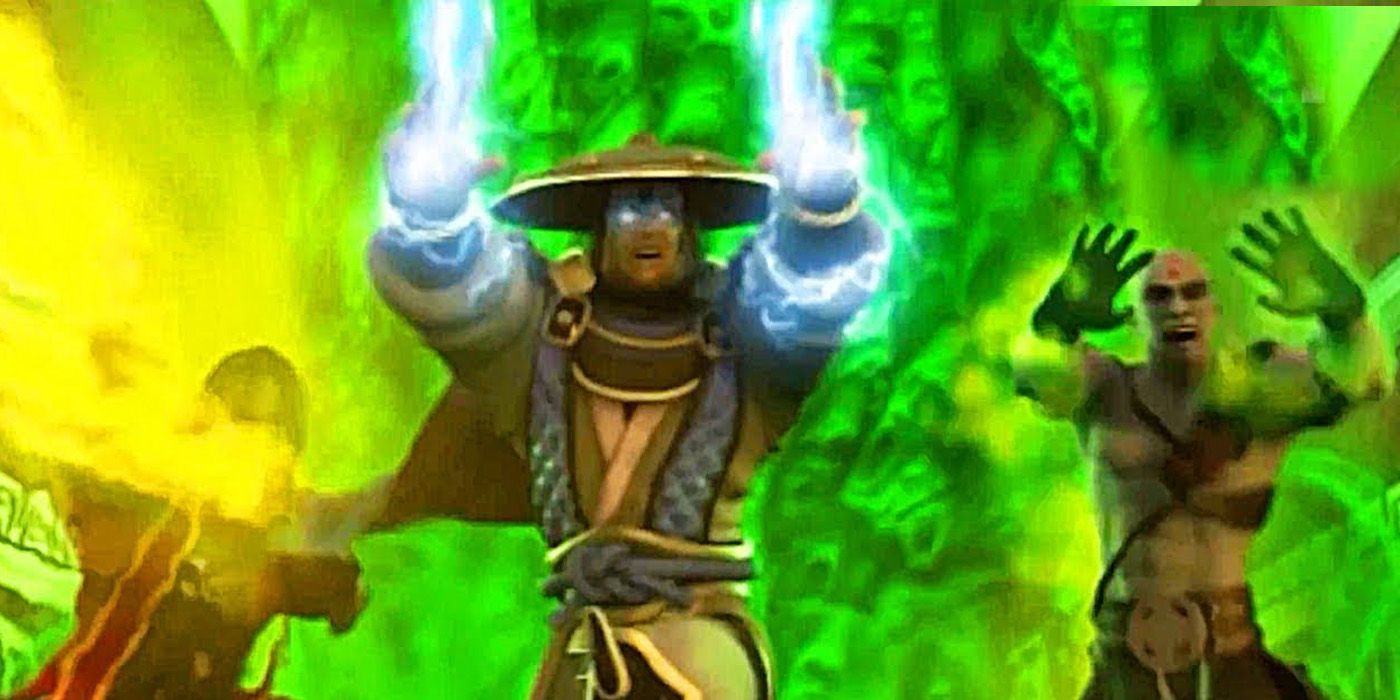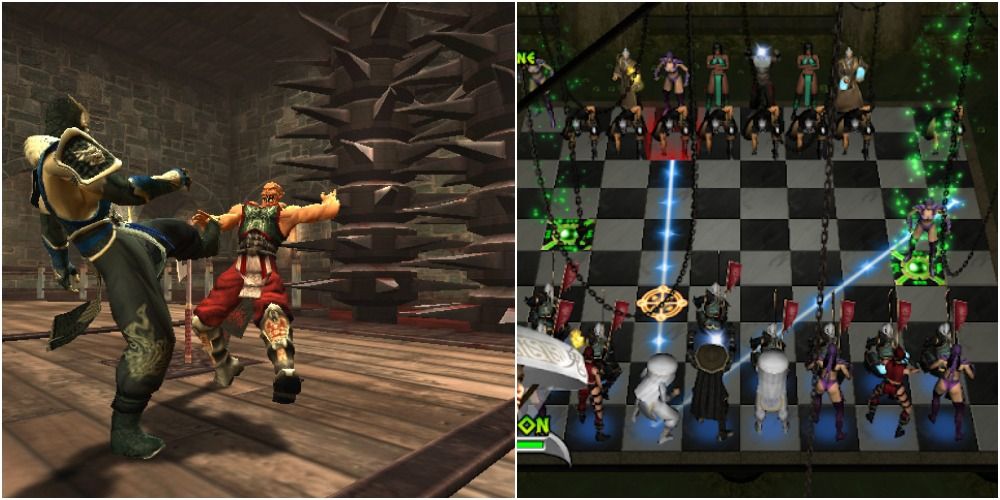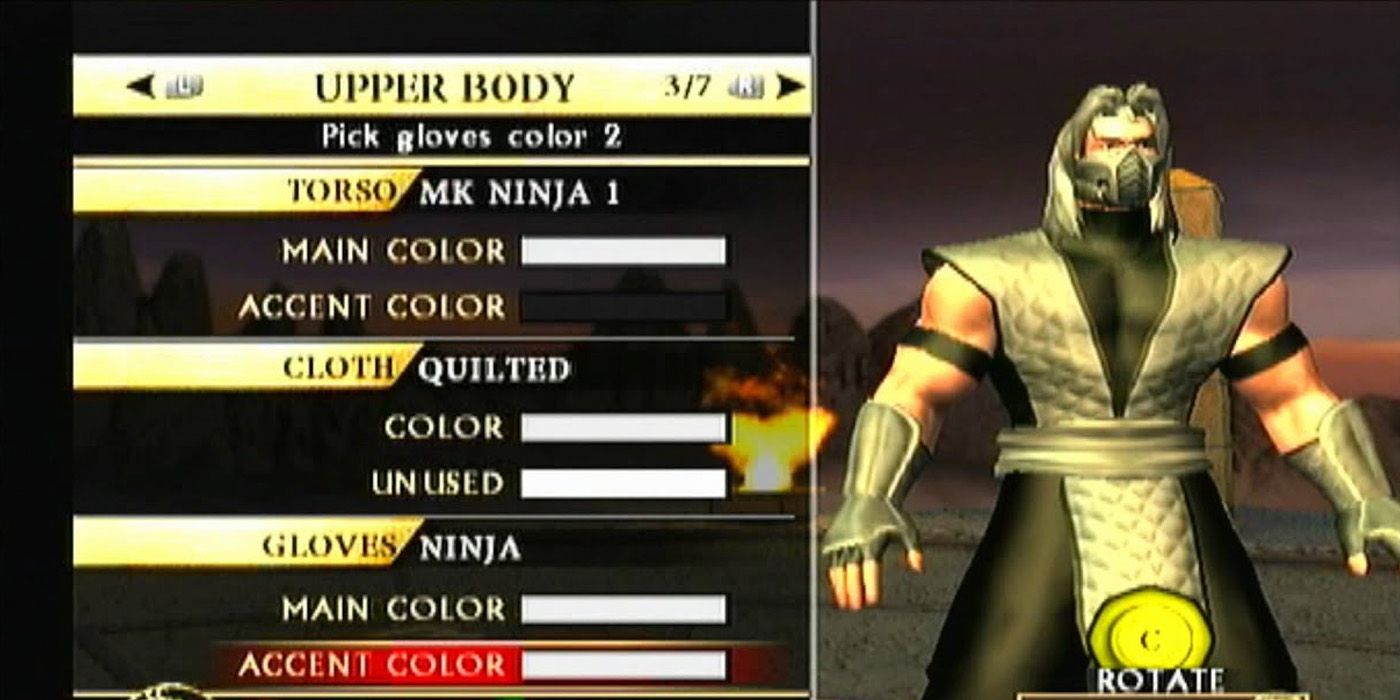Unlike other fighting games at the time, Midway's Mortal Kombat made a mark for its motion capture actors and rather liberal use of blood and gore in its gameplay. As a result, Mortal Kombat differed greatly from other fighting game hits such as flashy Street Fighter.
NetherRealm's recent Mortal Kombat 11 proves that the MK franchise has come a long way since its 2D graphics days. However, the nostalgic mocap wouldn't have made its leap to today's realistic combat if it weren't for Mortal Kombat's "3D era." Just what makes the 2000s such a memorable time for the series?
10 MK4: End Of The Arcade Era
Fans of old school games would remember a time when entire rooms had arcade boxes dedicated to racing games and fighting games such as Mortal Kombat. Sadly, the booming popularity of consoles meant there's not much room for the arcades anymore. Thankfully, Midway still made Mortal Kombat 4 to accommodate arcade boxes, but it was the last entry in the franchise to ever grace the medium.
Gamers who want to try how a semi-3D fighting game worked for arcades should enjoy MK4. Unlike the more realistic take on fighting games with recent titles, MK4 still retained its fast-and-loose approach to combat – where each second counted, each of Scorpion's "Get Over Here!" sounded more epic, and the speed made players want to spend each of their quarters in the arcade.
9 MK4: Experimentation Is Key
Aside from being the last arcade title in the franchise, MK4 also served as the formal "transition" towards a more 3D Mortal Kombat franchise. As a result, Ed Boon and the team at Midway experimented with a lot of concepts with its gameplay. For instance, MK4 didn't implement the slower and more realistic martial arts of its rival fighting game titles. Rather, Midway still applied MK's signature "arcade speed" to the new 3D graphics.
Additionally, it's MK4 that first introduced a limited weapon arsenal, sidestepping, and Maximum Damage combo cap to the franchise.
8 MK Gold: Secret Characters Galore
The lack of internet and social media in the '90s made video game "secrets" and "glitches" a popular past-time for hardcore gamers. The earlier games in the MK franchise were no stranger to secret stages and even secret or special characters. This tradition ended with Mortal Kombat Gold, an "updated" version of MK4 exclusively for the Sega Dreamcast.
While mostly identical to MK4, Gold boasted returning characters that had shared movesets with the existing cast. Furthermore, certain codes in the character select screen revealed hidden characters. These included Noob Saibot, Sektor, and even sub-boss Goro. Additionally, players could even have a bloody character (fan-named Meat) replace a selected character.
7 Failed Attempts For Action Adventure, Platformer
Thanks to the popularity of 3D games at the time, MK tried to capitalize on its branding to branch out to other genres. For instance, 2000's Mortal Kombat: Special Forces tried a beat-'em-up action-adventure approach instead of the traditional fighting game. In it, Jax Briggs attempts to track down Kano and the Black Dragon syndicate to bring them to justice. This game was a prequel to the entire franchise. Sadly, Special Forces' lackluster gameplay and graphics did result in it bombing critically.
Meanwhile, Mortal Kombat Mythologies: Sub-Zero became Midway's attempt at a platformer. This story follows Bi-Han, the first Sub-Zero, in his quest to prevent Quan Chi from possessing an amulet that would free Elder God Shinnok. In terms of aesthetic and gameplay, Mythologies: Sub-Zero had a very faithful approach to MK's themes. Unfortunately, its sluggish gameplay and rather confusing story made it one of the worst MK releases of all time. However, this game does give players a new perspective on the game's iconic ninjas outside Sub-Zero, such as the vengeful Scorpion.
6 MK Shaolin Monks: A Beat-'Em-Up Worthy Of The Brand
Where Special Forces and Mythologies: Sub-Zero failed, Mortal Kombat: Shaolin Monks would succeed. This 2005 title for the PlayStation 2 and Xbox allowed players to explore events that happened between MK and MK2 from the perspective of Liu Kang and Kung Lao. In turn, lore fans appreciated Shaolin Monks for its adventure-based take on introducing other realms and natives such as the Tarkatans, as well as expanding on their relevance to the story's overall plot.
Shaolin Monks offered a unique take on a fully-3D exploration fighting game. Liu Kang and Kung Lao can fight multiple enemies at once and even perform Multalities, aka Fatalities on many targets.
5 MK Deadly Alliance: The Full Gameplay Reboot
While MK4 served as the franchise's "transitory" stage towards a 3D game, Mortal Kombat: Deadly Alliance finally achieved Midway's goals in the form of a reboot. Deadly Alliance introduced new features such as three unique fighting styles per character, weapon-based fighting, faster three-dimensional movement, and a basic form of environmental interaction.
This game also expanded the personalization of the MK experience. For instance, the Krypt served as a place where players could unlock hidden characters and outfits. Meanwhile, Konquest Mode served as tutorial levels for each character that also expanded on their respective storylines.
4 The Handheld Era
Prior to mobile versions of recent MK games, the "3D era" also featured handheld Mortal Kombat titles across different handheld platforms. For instance, the Game Boy Advance actually had two games under this era: MK: Deadly Alliance and MK: Tournament Edition. In fact, these two games served as two "halves" of the GBA's Deadly Alliance port, where both boasted the same gameplay but each version had a different set of characters.
Meanwhile, the PlayStation Portable also had one Mortal Kombat release in the form of MK: Unchained, this time a port of Mortal Kombat: Deception. Unlike the original Deception, the PSP port of the game had all characters and stages unlocked. However, characters would still need to unlock their alternate costumes.
3 A Focus On Lore
Unlike the rather "messy" stories of prior Mortal Kombat games, games in the 3D era tried to put more focus on the lore involving the Mortal Kombat tournament. Beginning with MK: Deadly Alliance, players could now see more interactions between the franchise's growing roster. For instance, Deadly Alliance involves sorcerers Quan Chi and Shang Tsung creating the Deadly Alliance where they conspired to resurrect an ancient army to conquer Outworld themselves.
This story expands into later entries. With the two sorcerers teaming up together, MK: Deception begins with the resurrection of the Dragon King Onaga – who Shao Kahn originally usurped. Moreover, the lore culminates in MK: Armageddon, where Kombatants have to fight to the death to receive power unending based on an ancient prophecy.
2 MK Deception: Weapons, Stages, Gore
It's Mortal Kombat: Deception that cements Mortal Kombat's claim to fame in the 3D fighting game space. Whereas Tekken has a free-flowing style compared to the more competitive Street Fighter, Mortal Kombat is all about the gore. For instance, Deception has interactive stages with death traps, breakable walls, and even multiple levels. The game also has a Combo Breaker mechanic.
Additionally, the game boasts quirky modes and extra features. For instance, a Hara-Kiri finisher involves a match's loser killing themselves with a unique method. Meanwhile, new modes include Chess Kombat, where pieces engage in Kombat when trying to "take" a piece, and Puzzle Kombat, which adds a more tactical element to the franchise.
1 MK Armageddon: Kreate Mechanic Is A Godsend
The final game in the "3D era" of canonical MK titles, MK: Armageddon boasted the largest roster of Kombatants in a single game. This entry also came with some unique game modes, specifically Kreate A Fighter and Kreate A Fatality.
Kreate A Fighter allows players to build their very own Kombatant, complete with fighting styles and even unique attacks. Players also need to unlock various costume pieces, weapons, and special moves while playing the game.
Meanwhile, Kreate A Fatality allows players to create a custom Fatality – from buttons to actions and even cinematic flair. Players can achieve as much as eleven levels to a Fatality.

